| Date | Text | |
|---|---|---|
29 May 1586

Adam Lonicer |
death Adam Lonicer Adam Lonicer, German botanist (born 1528) |
|
29 May 1660
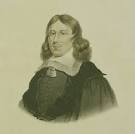
Frans van Schooten |
death Frans van Schooten Frans van Schooten, Dutch Cartesian mathematician (born 1615) |
|
29 May 1716

Louis-Jean-Marie Daubenton |
birth Louis-Jean-Marie Daubenton Born 29 May 1716; died 1 Jan 1800 at age 83. French naturalist who was a prolific pioneer in the fields of comparative anatomy and paleontology. Daubenton completed many zoological descriptions (including 182 species of quadrupeds for the first section of Georges Buffon's work Histoire naturelle, 1794-1804). His dissections contributed to productive studies in the comparative anatomy of recent and fossil animals, plant physiology, and mineralogy. He conducted agricultural experiments and introduced Merino sheep to France. In 1793, he became the first director of the Museum of Natural History in Paris. |
|
29 May 1767

Philippe Lebon |
birth Philippe Lebon Born 29 May 1767; died 2 Dec 1804 at age 37. French engineer and chemist, inventor of illuminating gas. He was born in the charcoal-burning town of Bruchay, France. In 1797 he began work that led to his invention of the first gas lighting. Heating sawdust in a glass tube over a flame produced a flammable gas. It smelled badly, and was smoky. He used the gas distilled from wood in his Thermolampe ("heat lamp") which he patented and exhibited in 1799. For several months he exhibited in 1801 a large version of the lamp in a Paris hotel. On the day of the ceremony for Napoleon's coronation in 1804, Lebon was robbed and fatally stabbed. William Murdoch, working independently in Scotland at the same time, produced, purified and stored gas; and more successfully introduced gas lighting. |
|
29 May 1781

John Walker |
birth John Walker Born 29 May 1781; died 1 May 1859 at age 77. English chemist and inventor who invented friction matches. He made them from small wooden sticks which he coated with sulphur, then tipped with a mixture of potassium chlorate, antimony sulphide and a binder of gum arabic. After searching for a suitable mixture with the intent of making a useful way to start a fire, he was successful on 27 Nov 1826. Beginning on 7 Apr 1827, he sold them in boxes of 50 for a shilling, with a folded slip of sandpaper as a striking surface. He called them Congreves, to honour Sir William Congreve, known for his invention of military rockets. He declined to patent the matches, yet was still able to make a comfortable income from them. |
|
29 May 1794
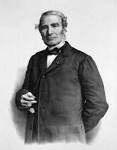
Antoine A. B. Bussy |
birth Antoine A. B. Bussy Born 29 May 1794; died 1 Feb 1882 at age 87. Antoine Alexandre Brutus Bussy was a French chemist who first prepared magnesium in a coherent form (Mg, element 12). Although mostly a pharmaceutical researcher, in Mémoire sur le Radical métallique de la Magnésie (1831)*, he described a method to isolate magnesium. He heated magnesium chloride and potassium in a glass tube. When he washed out the potassium chloride, small, shining globules of magnesium remained. Magnesium was discovered by Sir Humphry Davy (1808) but prepared in a very small amount. It is a ductile silver white alkaline earth metal. Magnesium is the eighth most abundant element in the Earth's crust. Bussy also prepared beryllium, independently of Wöhler, in Aug 1928, by the action of potassium on beryllium chloride. |
|
29 May 1794

Johann Heinrich von Mädler |
birth Johann Heinrich von Mädler Born 29 May 1794; died 14 Mar 1874 at age 79. German astronomer who (with Wilhelm Beer) published the most complete map of the Moon of the time, Mappa Selenographica, 4 vol. (1834-36). It was the first lunar map to be divided into quadrants, and it remained unsurpassed in its detail until J.F. Julius Schmidt's map of 1878. Mädler and Beer also published the first systematic chart of the surface features of the planet Mars (1830). |
|
29 May 1826
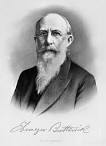
Ebenezer Butterick |
birth Ebenezer Butterick Born 29 May 1826; died 31 Mar 1903 at age 76. American manufacturer who is regarded as the inventor of graded paper patterns for clothing (1859), first sold in Sterling in Jun 1863. Formerly, a sewer had to enlarge or reduce from one standard pattern to make the required size. As a tailor, Butterick understood the need, and filled it by supplying tissue paper patterns in sizes. At first, these graded sewing patterns were cut and folded by members of his family and sold from their home in Sterling, Massachusetts. The business grew quickly, and in 1869 he moved to New York City. A box of one hundred patterns were sold at a wholesale price of $10 (retail $25). Also in 1869, he founded Metropolitan, a fashion magazine, to promote pattern sales. In the following years, he established subsidiary offices in all important centres in the U.S. and abroad. |
|
29 May 1829

Sir Humphry Davy |
death Sir Humphry Davy Died 29 May 1829 at age 50 (born 17 Dec 1778). English chemist (Baronet), who discovered several chemical elements and compounds, invented the miner's safety lamp, and epitomized the scientific method. With appointment to the Pneumatic Institution to study the physiological effects of new gases, Davy inhaled gases (1800), such as nitrous oxide (laughing gas) and a nearly fatal inhalation of water gas, (a mixture of hydrogen and carbon monoxide). Davy discovered alkali metals: potassium and sodium, an isolation made with electric current for the first time (1807); as well as alkaline earth metals: calcium, strontium, barium, and magnesium (1808). He discovered boron at the same time as Gay-Lussac. He recognized chlorine as an element, which prior workers confused as a compound. |
|
29 May 1829
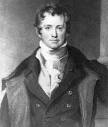
Humphry Davy |
death Humphry Davy Humphry Davy (born 1778), chemist. |
|
29 May 1839

Mungo Ponton |
Mungo Ponton (technology) Mungo Ponton presents his discovery of the light-sensitive quality of sodium dichromate as a method of permanent photography. |
|
29 May 1855

Sir David Bruce |
birth Sir David Bruce Born 29 May 1855; died 27 Nov 1931 at age 76. English bacteriologist and military physician who traced (1886-87) the Malta-fever to a bacterium later (1920) named for him, Brucella melitensis. Malta-fever is also the undulant fever that causes abortion in goats. It is usually transmitted by goat's milk. He also investigated (1894) the trypanosomes which caused nagana, a disease of horses and cattle in northern Zululand, Africa, and found (1895-97) it to be transmitted by the tsetse fly. He thought the local wild game was the trypanosomal reservior. This work led to his further research which identified the tsetse fly as the vector in sleeping sickness. He was knighted in 1908, and won the Leeuwenhoek Medal in 1915. He also researched tetanus and trench fever. |
|
29 May 1855

David Bruce |
birth David Bruce David Bruce (died 1931), microbiologist. |
|
29 May 1857

Charles Richard Van Hise |
birth Charles Richard Van Hise Born 29 May 1857; died 19 Nov 1918 at age 61. U.S. geologist who conducted basic geological studies of the Precambrian (570,000,000 to 4,600,000,000 years ago) formations of the Lake Superior region, particularly the iron ores in these formations. These studies were useful for the economic exploitation of the vast iron-ore fields found in that region. He was very interested in, and wrote about, the conservation of natural resources. He regarded soil conservation as "the basal asset of the nation," followed by the "economic mining and use of coal, the conservation of the forests, and the use of metals with the minimum waste." |
|
29 May 1866
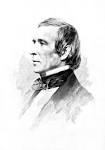
Henry Darwin Rogers |
death Henry Darwin Rogers Died 29 May 1866 at age 57 (born 1 Aug 1808). American structural geologist who contributed much to the theory of mountain building through his studies of the geology of Pennsylvania. The Dept.of Geology and Mineralogy at the University of Pennsylvania was founded in 1835 with Rogers as its first professor. Professor Rogers organized and directed the first Geological Survey of the State as the first State Geologist of Pennsylvania. Together with his brother William, he mapped Pennsylvania, New Jersey and Virginia, including much of the Appalachian Mountain system, interpreting the stratigraphy and structure and thus providing the first adequate understanding of the geologic structure of any large mountain belt. |
|
29 May 1883
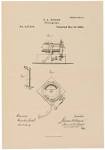
Edison patents |
Edison patents In 1883, Thomas A. Edison received a series of patent for some of his electrical inventions. One patent was for a "Dynamo-Electric Machine" (U.S. No. 278,419), and two for a "Regulator for Dynamo-Electric Machines" (No. 278,413 and -4). Three of the patents covered the "Manufacture of Incandescing Electric Lamps" (No. 278,415; -6 and -7), and one for an "Apparatus for Translating Electric Currents From High to Low Tension," (No. 278418). In addition a Design Patent No. 13940 was issued for a "Design for Incandescing Electric Lamp." |
|
29 May 1885

Shoe manufacturing machine |
Shoe manufacturing machine In 1885, Jan Matzeliger gave a public demonstration in Lynn, Massachussets, of his newly-invented machine's ability to mass-produce shoes, and replace the tedious hand work previously required to attach the sole to the upper of a shoe. On this day, it is said he produced 75 pairs of women's shoes under factory conditions, many more than was possible by hand workers. His first patent on his shoe-lasting invention was issued on 20 Mar 1883 (U.S. No 274,207). With investors, his production model, was quickly adopted by and revolutionized the shoe industry. |
|
29 May 1887

L. L. Thurstone |
birth L. L. Thurstone Born 29 May 1887; died 29 Sep 1955 at age 68. L(ouis) L(eon) Thurstone was an American psychologist who improved psychometrics, the measurement of mental functions, and developed statistical techniques for multiple-factor analysis of performance on psychological tests. In high school, he published a letter in Scientific American on a problem of diversion of water from Niagara Falls; and invented a method of trisecting an angle. At university, Thurstone studied engineering. He designed a patented motion picture projector, later demonstrated in the laboratory of Thomas Edison, with whom Thurstone worked briefly as an assistant. When he began teaching engineering, Thurstone became interested in the learning process and pursued a doctorate in psychology. |
|
29 May 1888

Lubricator |
Lubricator In 1888, another of his several dozen lubricating devices was patented by black American inventor, Elijah J. McCoy (U.S. No. 383,746). |
|
29 May 1896

Gabriel-Auguste Daubrée |
death Gabriel-Auguste Daubrée Died 29 May 1896 at age 81 (born 25 Jun 1814). French geochemist and a pioneer in the application of experimental methods to the study of diverse geologic phenomena. His appointment as professor of geology and mineralogy at Strasburg furnished him with a laboratory suitable for his experimental work in synthetic geology, begun in 1849. He studied the artificial production of minerals, the geological action of superheated aqueous vapour, the effect of mutual abrasion, the influence of pressure and strain in mountain-making, etc. During the years 1857-61 he made a detailed study of the hot springs of Plombières, observing at the same time the chemical action of thermal waters. Daubréelite (CrS), a grayish granular mineral found in meteoric iron, was named after him. |
|
29 May 1897
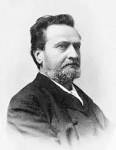
Julius von Sachs |
death Julius von Sachs Died 29 May 1897 at age 64 (born 2 Oct 1832). (Ferdinand Gustav) Julius von Sachs was a German botanist studying plant physiology, nutrition, and tropism (response to environmental stimuli). He discovered transpiration: that the absorbed water moves in tubes in the plant walls without the cooperation of living cells. In 1865, Sachs discovered chlorophyll, the green substance of plants; that it is located in special bodies within plant cells (later called chloroplasts); that glucose is made by the action of chlorophyll; and that the glucose is usually stored as starch. Sachs studied the formation of growth rings in trees, the role of tissue tension in promoting organ growth. He invented the clinostat to measure the effects of such external factors as light and gravity on the movement of growing plants. His work was a significant contribution to the knowledge of plant physiology during the second half of the 19th century. |
|
29 May 1898

Nobel's will |
Nobel's will In 1898, the heirs of Alfred Nobel sign a "reconciliation agreement" so that lawyers and accountants can execute his will. The will's major bequest was to create the Nobel Prizes, but first, there were disputes to be settled. |
|
29 May 1898

Lyon Playfair, 1st Baron Playfair |
death Lyon Playfair, 1st Baron Playfair Lyon Playfair, 1st Baron Playfair (born 1818), Scottish chemist. |
|
29 May 1905

Largest transporter bridge |
Largest transporter bridge In 1905, the Runcorn-Widnes Transporter Bridge was opened to replace a ferry across the River Mersey. It was the first of its kind in Britain: a high-level gantry along which a wheeled trolley travelled with a cargo-carrying platform suspended beneath it at ground level. Thus traffic could cross the river using a bridge that needed no long approach ramps required for a high-level road bridge, and yet permitted tall, ocean-going ships to pass beneath the structure. The span of the bridge was 1000-ft (305-m) with towers standing 190-ft (58-m) above high water. It was the largest of its type ever built in the world, designed by John Webster and John Wood. It closed on 22 Jul 1961 and shortly afterwards was demolished. |
|
29 May 1908

William Arnold Anthony |
death William Arnold Anthony Died 29 May 1908 at age 72 (born 17 Nov 1835). American physicist and electrical engineer who initiated and developed one of the first courses in electrical engineering in the U.S. (1883), while teaching in the Physics Department at Cornell University, Ithaca, N.Y. During 1872-75, Anthony, with the aid of student George Moler, built the first American Gramme dynamo for direct current, used to power arc lamps that lighted the Cornell campus, the first American electrical outdoor-lighting system. Anthony also built a mammoth tangent galvanometer, a device which utilized the earth's magnetic field for the measurement of current. He designed the dynamo for first underground electricity distributing system. Anthony contributed to development of gas-filled electric lamps. |
|
29 May 1912

Chien-Shiung Wu |
birth Chien-Shiung Wu Born 29 May 1912; died 16 Feb 1997 at age 84. Chinese-American physicist who provided the first experimental proof (1956) that parity is not conserved in weak subatomic interactions of nuclear beta decay. When two physicists, Tsung-Dao Lee, and Chen Ning Yang proposed that parity was not conserved for weak interactions, Dr. Wu tested the proposal by observing the beta particles given off by cobalt-60. She observed that there is a preferred direction of emission, and that therefore, parity was not conserved for this weak interaction. In other words, Dr. Wu was able to prove that identical nuclear particles do not always act alike, and, thereby, disprove, what was then, a widely accepted “law” of nature. |
|
29 May 1919
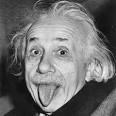
Einstein's relativity theory proved |
Einstein's relativity theory proved In 1919, a solar eclipse permitted observation of the bending of starlight passing through the sun's gravitational field, as predicted by Albert Einstein's theory of relativity. Separate expeditions of the Royal Astronomical Society travelled to Brazil and off the west coast of Africa. Both made measurements of the position of stars visible close to the sun during a solar eclipse. These observations showed that, indeed, the light of stars was bent as it passed through the gravitational field of the sun. This was a key prediction of Albert Einstein's theory that gravity affected energy as in addition to the familiar effect on matter. The verification of predictions of Einstein's theory, proved during the solar eclipse was a dramatic landmark scientific event. |
|
29 May 1919
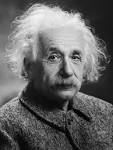
Einstein's |
Einstein's (physics) Einstein's theory of general relativity is tested by Arthur Eddington's observation of the "bending of light" during the total solar eclipse on this day observed in Principe, and by Andrew Crommelin in Sobral, Ceará, Brazil (confirmed November 19). |
|
29 May 1923

Edison patent |
Edison patent In 1923, Thomas A. Edison was issued a patent concerning "Stylus Mounting" (No. 1,456,687), a mount for phonograph stylii formed of a jewel such as diamond or sapphire in which the stylus is partially enclosed in a metal holder and projects from a reduced end portion thereof. The particular improvement is to provide for the stylus to be firmly and rigidly held to prevent it from loosening in use. A method of reinforcing the stylus mounting is applied at its weakest point, which is where the stylus emerges. An electroplating cell is used to apply a nickel reinforcing collar to the stylus. |
|
29 May 1929

Peter Higgs |
birth Peter Higgs Born 29 May 1929. Peter Ware Higgs is an English theoretical physicist, the namesake of the Higgs boson. In the late 1960s, Higgs and others proposed a mechanism that would endow particles with mass, even though they appeared originally in a theory - and possibly in the Universe! - with no mass at all. The basic idea is that all particles acquire their mass through interactions with an all-pervading field, called the Higgs field. which is carried by the Higgs bosons. This mechanism is an important part of the Standard Model of particles and forces, for it explains the masses of the carriers of the weak force, responsible for beta-decay and for nuclear reactions that fuel the Sun. No Higgs boson has yet been detected; its mass (over 1 TeV) exceeds the capacity of any current accelerator. |
|
29 May 1932

Paul R. Ehrlich |
birth Paul R. Ehrlich Born 29 May 1932. Paul Ralph Ehrlich was an American biologist and educator who in 1990 shared Sweden's Crafoord Prize (established in 1980 and awarded by the Royal Swedish Academy of Sciences, to support those areas of science not covered by the Nobel Prizes) with biologist E.O. Wilson. He has been a pioneer in alerting the public to the problems of overpopulation and in raising issues of population, resources, and the environment as matters of public policy. Ehrlich is regarded as the co-founder, along with Peter H. Raven, of the field of coevolution, and has pursued long-term studies of the structure, dynamics and genetics of natural butterfly populations. |
|
29 May 1932

Cuthbert Christy |
death Cuthbert Christy Cuthbert Christy (born 1863), English medical investigator, zoologist and explorer. |
|
29 May 1945
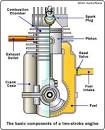
Two cycle gas engine |
Two cycle gas engine In 1945, a two-cycle gas engine was patented by black American inventor F.M. Jones (U.S. No. 2,376,968). His first patent was for a ticket dispensing machine (1939), but in the next twenty years Jones produced numerous inventions to patent related to refrigeration and air conditioning for trucks and railway boxcars with their associated engines, compressors and control devices. He solved the problems for truckers hauling poultry and other perishables troubled by packing ice melting away during a trip. Jones combined a knowledge of shock-proofing and engine building from building racing cars in his youth with a study of refrigeration from library books. Later, he designed all Army and Marine field kitchen refrigeration systems. |
|
29 May 1951
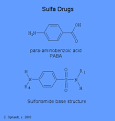
Sulfa drugs |
Sulfa drugs In 1951, a patent for improved sulfonamide drugs was issued to James W. Clapp and Richard O. Roblin, (U.S. No. 2,554,816). Sulfa drugs are members of a group of synthetic antibacterial drugs containing the sulfanilamide molecular structure. Sulfonamides (first observed in 1932) were the first chemical substances that were systematically used to cure and prevent bacterial infections in humans. Of the 5,000 sulfa drugs prepared and tested, fewer than 20 continue to have therapeutic value because resistant strains of bacteria have developed. More potent antibacterial drugs have largely replaced the sulfa drugs. They remain useful in the treatment of urinary tract infection. |
|
29 May 1961

Arnold Gesell |
death Arnold Gesell Died 29 May 1961 at age 80 (born 21 Jun 1880). Arnold Lucius Gesell was an American psychologist and pediatrician who pioneered the use of motion-picture cameras (1926) to study the physical and mental development of normal infants and children. His books gave norms for behavior at successive stages of development and were widely read by parents. Gesell was one of the first to attempt a quantitative study of child development, developing his own methods of observation and measurement. Gesell's initial work focused on developmentally disabled children, but he believed that it was necessary to understand normal infant and child development in order to understand nonnormality. He also studied Down's syndrome, cretinism, and cerebral palsy. |